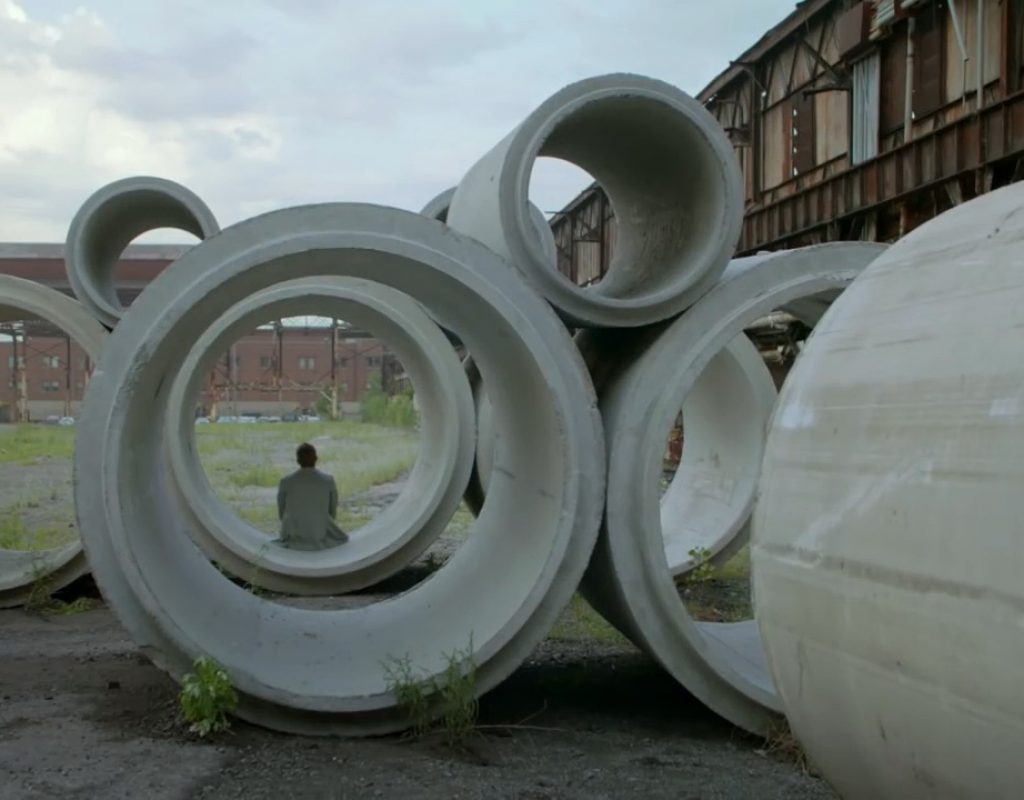I’ve worked on episodic television. I know how fast it moves. That’s why I’m amazed at how good recent TV shows tend to look. Not only are the stories and acting better than what I see in features, but the cinematography is on par as well. It’s not always as complex as one will see on a feature, but it’s amazing what television cinematographers are able to do quickly and simply.
The following are three shows that I’ve watched and enjoyed over the last year or two that tend to be pretty obscure, at least in the U.S. Each has a different look. I’m going to touch on what I see in all three, and if you happen to watch any of them maybe you’ll see the same things I did… and maybe more.
PATRIOT (Amazon)
https://www.youtube.com/watch?v=nx-lLeKkqEQ&t=2s
This is my favorite of the bunch. It’s a slow burn, but it’s incredibly smart, quirky, dark and funny. This is the kind of show you’d never see produced on a network. It’s a little bit hard to describe, but here goes:
Imagine a burned out super spy by the name of John Lakeman (really John Tavner), who agrees to a top secret, deniable mission to help out his father, who is a bigwig in U.S intelligence. It’s the last thing he wants to do: he accidentally killed the wrong man on his previous mission and spent three months being tortured in a foreign country, and all he really wants to do is bring his wife to Amsterdam, get stoned, and ride bikes with her across Europe.
But… family wins out, and before long he finds himself trying to get work as a piping export at a construction company in Milwaukee. This gives him cover to go to Luxembourg, where he’s to give a bag of money to an Iranian politician in order to influence an election.
Of course it all goes horribly and hysterically wrong. Soon he’s on the run from the Luxembourg police, whose homicide squad is composed entirely of women because the men have snapped up the “sexy” financial crimes jobs, and there are (normally) no murders in Luxembourg—until he arrives with a bag of money that is immediately stolen.
That’s only the first episode. That’s part of the first episode. There’s LOTS more.
The show is amazingly quirky. For example, Tavner’s only stress release is singing folk music at open mic nights, but his improvised songs include sensitive details about his current mission. In this scene, his brother—a U.S. congressman—has to react quickly to his brother’s performance:
What grabbed me about this show is that it is SMART. It’s extremely well plotted, the dialog is excellent, the actors are phenomenal, but the cinematography and the directing show incredible vision and foresight. For example:
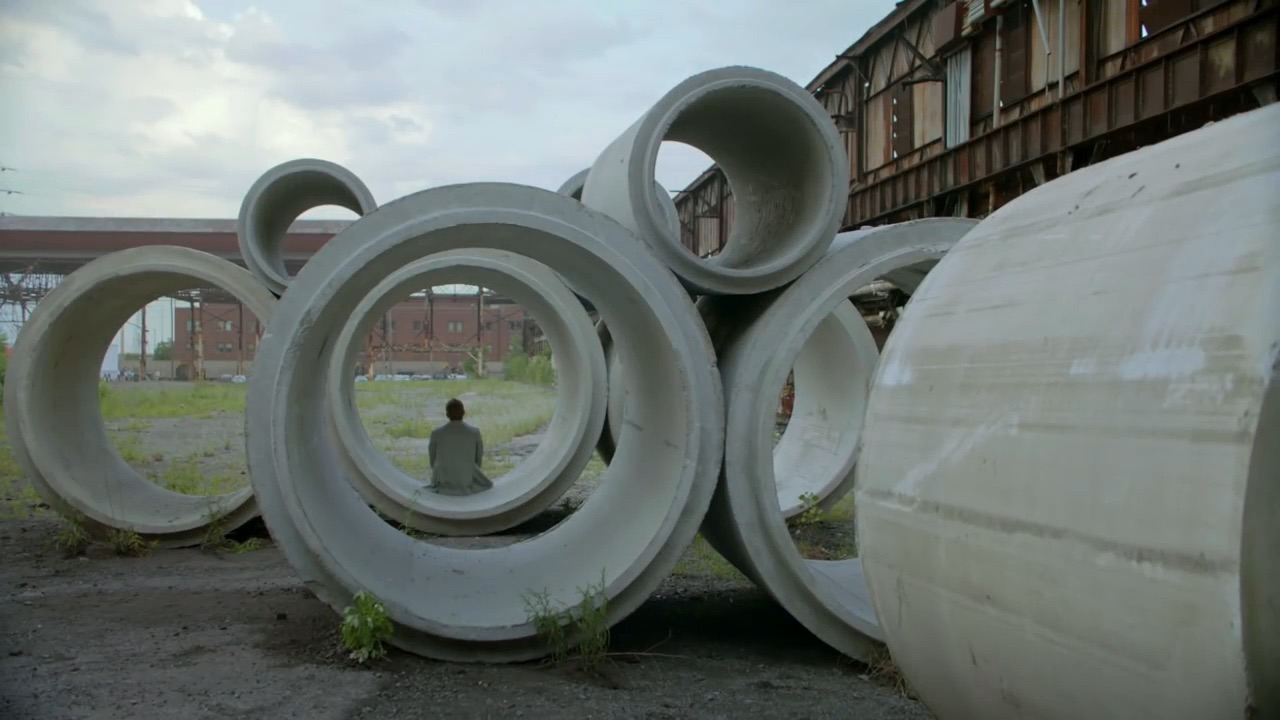 There are several scenes, scattered throughout the series, where—in one take—eight or nine things go catastrophically wrong. Tavner often contemplates his predicaments while seated outside in a field of concrete pipes, and in one scene—likely the one above—people enter the frame one by one and tell him something that destroys just a little bit of his world. They enter from all directions, but the scene never seems forced: each character enters frame and drops a little bombshell that compromises John Tavner’s plans while he sits, dejected, wishing to be anywhere else.
There are several scenes, scattered throughout the series, where—in one take—eight or nine things go catastrophically wrong. Tavner often contemplates his predicaments while seated outside in a field of concrete pipes, and in one scene—likely the one above—people enter the frame one by one and tell him something that destroys just a little bit of his world. They enter from all directions, but the scene never seems forced: each character enters frame and drops a little bombshell that compromises John Tavner’s plans while he sits, dejected, wishing to be anywhere else.
There are several examples of this kind of mise en scene in the series, where a scene plays out in one complex and beautifully-choreographed Steadicam move, or the camera sits perfectly still (as in the frame above) and characters move in and out of the frame.
Here’s one such scene from the first episode. A coworker complains that John stabbed him in the thigh because he tried to follow John in Luxembourg, but then reveals that he subscribed to a local newspaper to see what John was up to. John knows that this is going to result in a police investigation, and he’s not thrilled—but then he discovers that he’s likely going to be dropped from the return trip to Luxembourg, which he needs to take because the original trip didn’t go to plan. He also pushed a fellow job applicant in front of a truck to make sure that he got the job instead, but even with brain damage the guy won’t go away. A security guard has figured out who John really is, and makes a point of telling him. And then John’s dad calls to let him know that they’ve been played and the money is in the wrong hands. His life crumbles in one five minute Steadicam shot:
http://www.youtube.com/watch?v=K_2Rx-LEeMQ&t=52m39s
How often do you see this kind of thing played out in a TV series? It’s brilliant.
Composition is not an easy thing to do well. It requires buy-in from the director and a lot of planning, as composition and coverage are inextricably linked.
For example, in this scene from the pilot, the sequence of shots is:




 I love starting scenes on close shots and waiting a bit before pulling wide and showing the environment. It’s a clever way to draw the viewer into the scene, as not knowing exactly where it is set builds tension that is released by the wide shot. It’s a beautiful wide shot, too, but it only appears once for a few seconds. My guess is they only ran the performances for the first 30 seconds of the scene, cut, and then covered the entire scene again in closer shots.
I love starting scenes on close shots and waiting a bit before pulling wide and showing the environment. It’s a clever way to draw the viewer into the scene, as not knowing exactly where it is set builds tension that is released by the wide shot. It’s a beautiful wide shot, too, but it only appears once for a few seconds. My guess is they only ran the performances for the first 30 seconds of the scene, cut, and then covered the entire scene again in closer shots.
Old-time TV directors used to do this: they’d shoot a master until they were one line into where they knew they’d only use closeups. They’d cut, and then move in for closeups. They didn’t get coverage they didn’t need. In this case the wide shot is beautiful, and serves a purpose at the beginning of the scene, but after that, it’s done.
Notice, also, that the camera always faces the same direction. I love this style of coverage: even though the characters don’t face each other, they face us, and it just… works.
The series has a Wes Anderson single point perspective vibe that works well to keep the show somewhat light even though John Tavner’s life gets worse with every minute of every episode.

 And, like so many series now, it is clearly shot at very low light levels. When I was a camera assistant, I knew I could get any shot in focus on any lens at T4. T2.8 saw me getting a little nervous, and T2 saw me getting very nervous. T1.3 was… well, I just gave it my best shot. Back then we had to do all this by eye, and we didn’t know what was in focus until the next day, so I lost a lot of sleep when working with DPs who lit scenes with a single Kino tube. (I remember once having to pull focus on a night interior shot, handheld, at T1.3, without a rehearsal. It was the last night of the feature, and I still don’t know how much of it was in focus. Normally I’d find out in dailies, but by the time they saw dailies I was on to the next job.)
And, like so many series now, it is clearly shot at very low light levels. When I was a camera assistant, I knew I could get any shot in focus on any lens at T4. T2.8 saw me getting a little nervous, and T2 saw me getting very nervous. T1.3 was… well, I just gave it my best shot. Back then we had to do all this by eye, and we didn’t know what was in focus until the next day, so I lost a lot of sleep when working with DPs who lit scenes with a single Kino tube. (I remember once having to pull focus on a night interior shot, handheld, at T1.3, without a rehearsal. It was the last night of the feature, and I still don’t know how much of it was in focus. Normally I’d find out in dailies, but by the time they saw dailies I was on to the next job.)
Now camera assistants regularly pull focus using wireless controllers while watching a 17″ monitor near the set. This is not the best way to pull focus for entire scenes, as it’s often easier to focus using set marks when actors are moving around, but it’s perfect for nailing focus when actors stop and miss their marks. Because of this, series DPs are now free to light to very low levels and shoot at very wide stops, using natural light whenever possible and taking advantage of the low contrast that most lenses impart to a scene when used wide open.
As the stop opens up, the light has to pass through more glass, and that causes the light to bounce around a bit more. Some DPs talk about how the light fills itself in at low light levels, and often the image on the monitor looks very much like what the eye sees.
This isn’t a license not to light, however. Most naturally-lit scenes look awful, particularly on faces, and the environmental lighting may not suit the subject matter. Rather, the lighting can be simpler: we can use smaller units, or use negative fill to shape ambient light, or light the foreground but let ambient light illuminate the background. Those tricks make for high quality imagery on a fast-paced TV show schedule.
 This is probably my favorite TV show of the year. It’s not the fastest paced show you’ll see, but it is by far the smartest. If you like dark humor, you can’t go wrong. If you like gorgeous but naturalistic cinematography, this is a master class in composition, staging, and lighting quickly and minimally.
This is probably my favorite TV show of the year. It’s not the fastest paced show you’ll see, but it is by far the smartest. If you like dark humor, you can’t go wrong. If you like gorgeous but naturalistic cinematography, this is a master class in composition, staging, and lighting quickly and minimally.
Patriot has been renewed for a second series.
TRAPPED (Amazon)
This “Nordic Noir” thriller is also one of the best shows I’ve seen all year. When a torso is found in the water just off the shoreline of a small Icelandic town, the local police find themselves stretched to the breaking point as they piece together an astounding web of local corruption that leads to multiple deaths.
Not only are the performances and the story stellar, the cinematography is stunning—but in a very different way to Patriot. Once again, the emphasis is on using natural light, or emulating natural light, and shooting at very low light levels, but the look is much grittier.
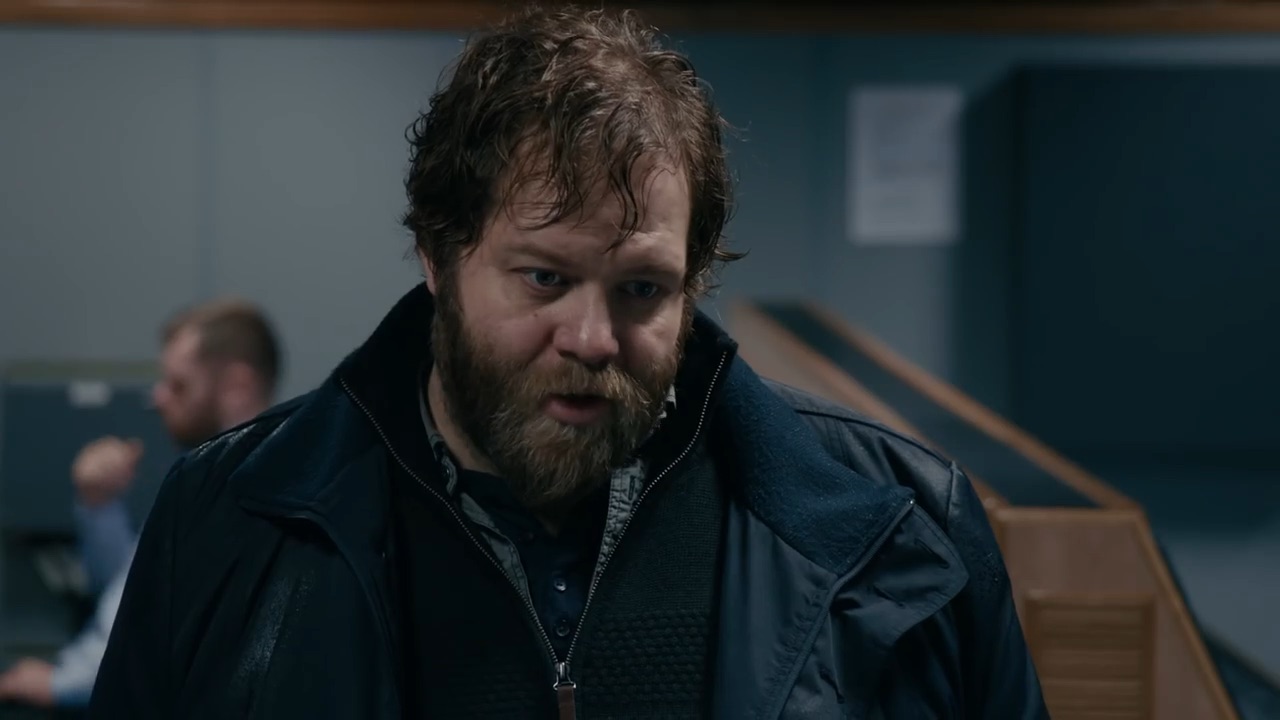
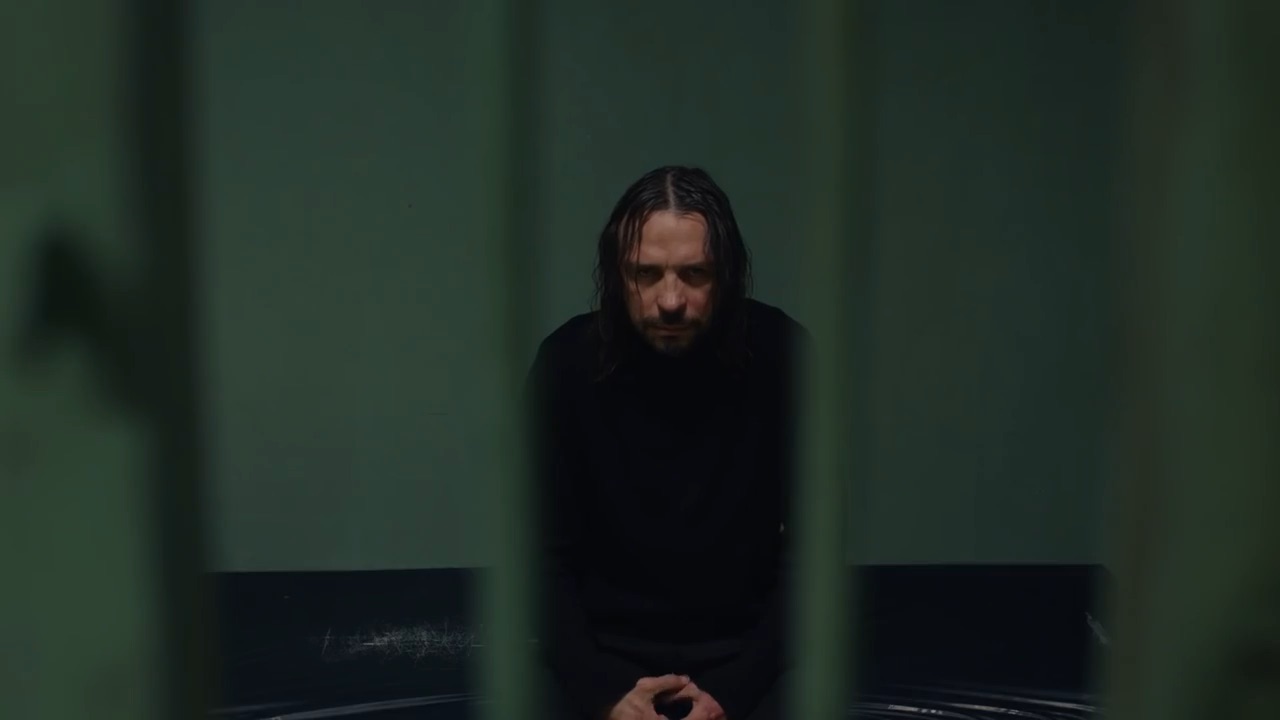 It’s not ugly, and it doesn’t make people look bad, but it also doesn’t look lit. That’s quite a feat.
It’s not ugly, and it doesn’t make people look bad, but it also doesn’t look lit. That’s quite a feat.
What I love the most is that I can feel where the light sources are, even though I can’t always see them, and the fill light matches what I’d expect to see from the environment. For example,
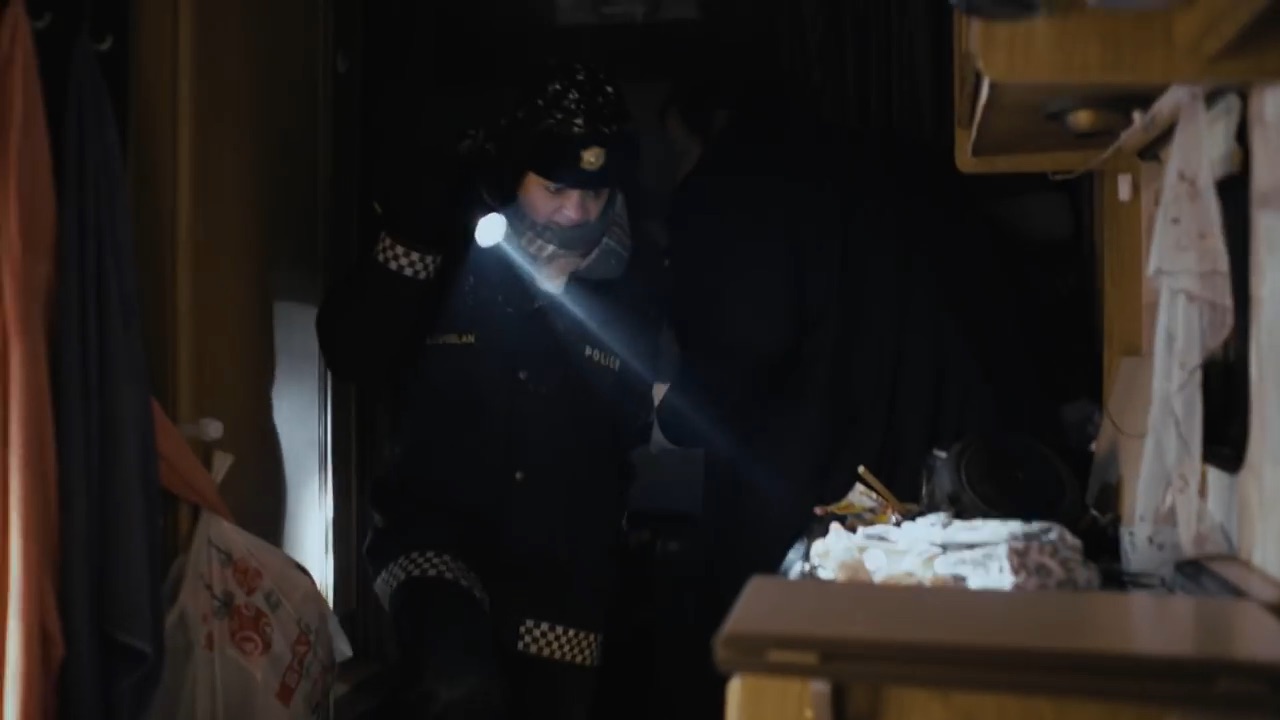 This looks like a night scene to me, not just because it’s dark but because there are multiple light sources mixing together in a kind of low contrast murk. I see this when walking down a city street at night: lots of small light sources combine into a base of colored fill light, and yet it’s still obviously night.
This looks like a night scene to me, not just because it’s dark but because there are multiple light sources mixing together in a kind of low contrast murk. I see this when walking down a city street at night: lots of small light sources combine into a base of colored fill light, and yet it’s still obviously night.
There’s something magical about low contrast mixed light source night scenes, and now that we can shoot wide open without worrying too much about focus we can quickly create such environments.
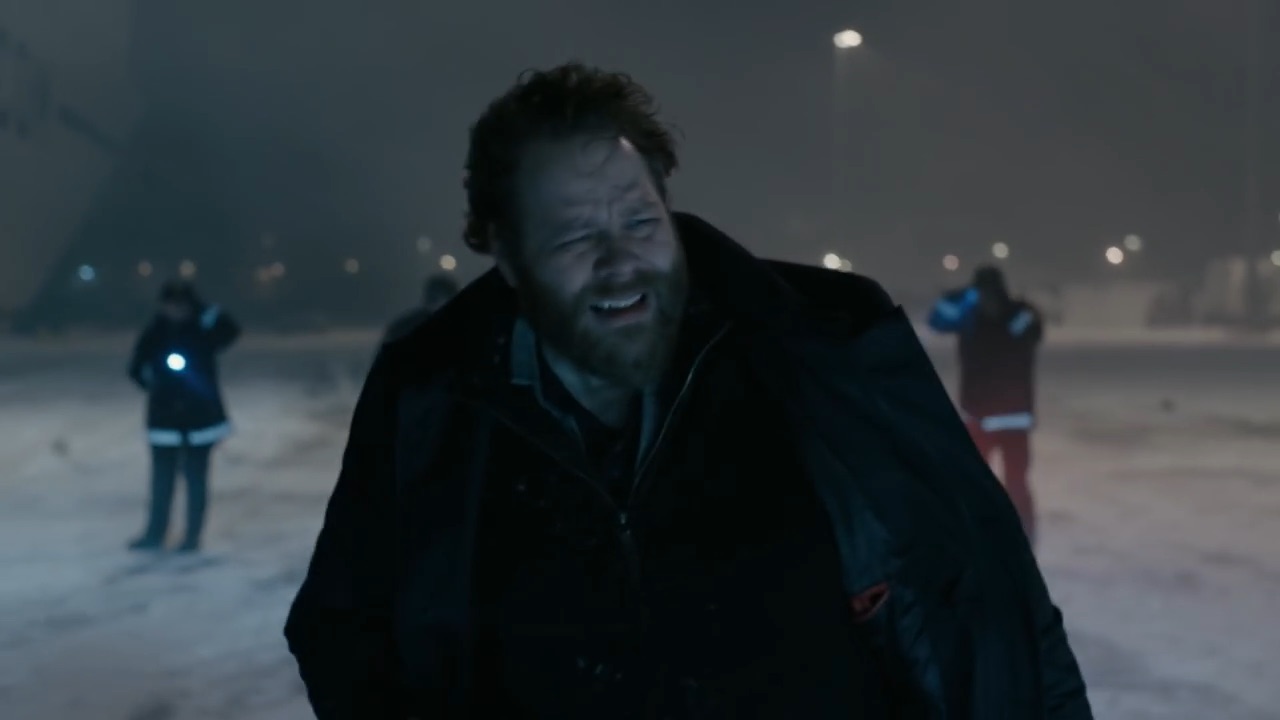 I love how there’s no direct light hitting his face. He appears to be lit by bounce light from the snow. The highlights in the background keep the shot from appearing dull by giving us a “brightness reference,” which tells us the frame is supposed to be dark and not accidentally underexposed. This is where this series excels: lighting shots that would look exactly this way in real life, but without looking ghastly. I frequently thought to myself, “Wow—light would actually do that!”
I love how there’s no direct light hitting his face. He appears to be lit by bounce light from the snow. The highlights in the background keep the shot from appearing dull by giving us a “brightness reference,” which tells us the frame is supposed to be dark and not accidentally underexposed. This is where this series excels: lighting shots that would look exactly this way in real life, but without looking ghastly. I frequently thought to myself, “Wow—light would actually do that!”
I’d recommend watching this series for its use of naturalistic environmental lighting, while paying extra attention to the fill light. Fill light has a direction to it, and if it comes from the wrong direction it can make a scene look lit just as quickly as a misplaced key light. One example of this is filling from the key side, which almost always cleans up faces regardless of where the key light is placed, and almost never looks forced.
Trapped has been renewed for a second series.
UTOPIA
I’m not going to lie. This series is messed up. It is frequently brutal to watch. It’s also very well done. Several people from wildly different backgrounds stumble onto a plot that will effectively result in the end of the world, and when they try to stop it they discover that the organization they are up against is vastly bigger than they could ever imagine.
What’s fun about the cinematography is that it’s shot in 2.39:1 wide screen and the filmmakers use the entire frame, all the time. Mostly they put people and things in the dead center of frame, but they also work the sides as well. Many shots are framed dead on to the background. The images feel as if the camera is usurping control of the characters’ lives. It’s all very disturbing, and suits the series perfectly.
Like Patriot, there’s a lot of single point perspective going on, and the filmmakers aren’t afraid to frame their shots with a lot of extra headroom:
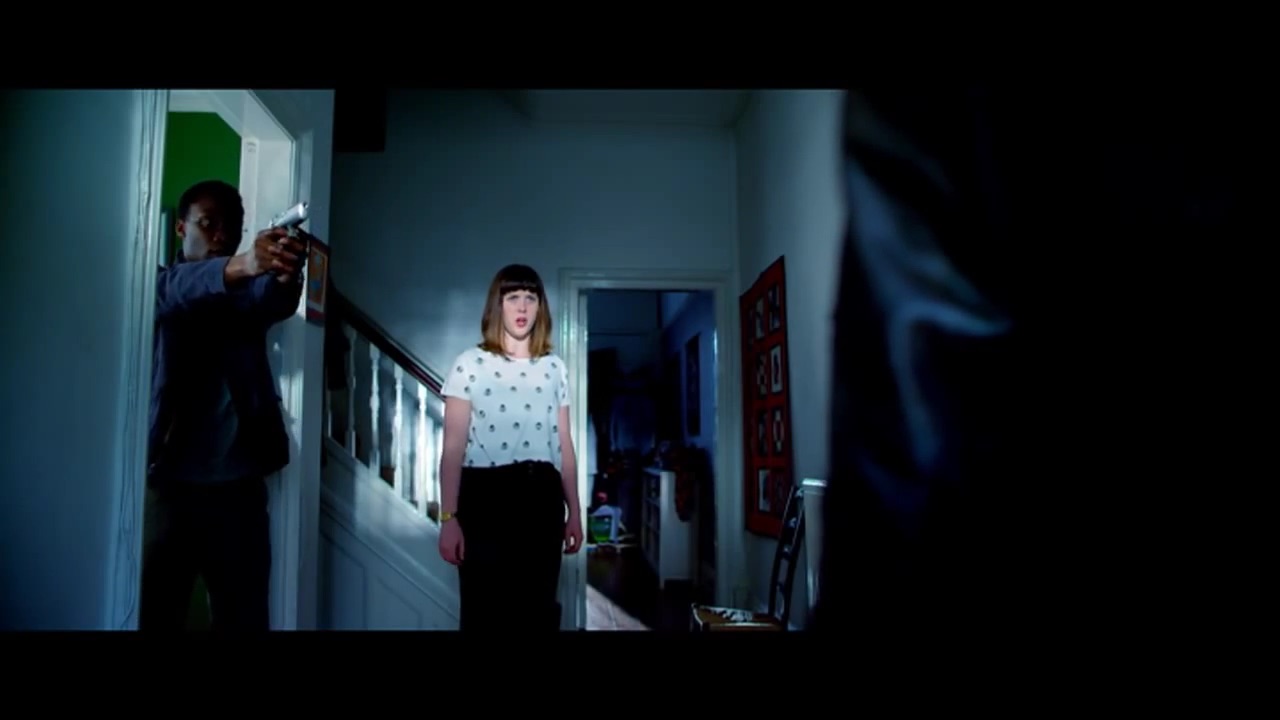





 We’re all taught in film school that head room is “this much,” but I love that we’re getting away from that in TV and commercials. Headroom is arbitrary. You see still photographers composing with “this much” headroom for every photo; rather, they use the entire frame and either fill it with something that leads the eye around the frame or use negative space to “push” the eye into the one thing in the frame they want you to look at.
We’re all taught in film school that head room is “this much,” but I love that we’re getting away from that in TV and commercials. Headroom is arbitrary. You see still photographers composing with “this much” headroom for every photo; rather, they use the entire frame and either fill it with something that leads the eye around the frame or use negative space to “push” the eye into the one thing in the frame they want you to look at.
 The trick with this kind of framing is to make sure there’s always something at the top of the frame to justify the extra space… or, alternately, make sure there’s nothing there. These kinds of images can feel sloppy if the top of the frame cuts off something at the top of frame for no particular reason.
The trick with this kind of framing is to make sure there’s always something at the top of the frame to justify the extra space… or, alternately, make sure there’s nothing there. These kinds of images can feel sloppy if the top of the frame cuts off something at the top of frame for no particular reason.
I wrote an article about this that you can find here, but the short version is that you have to think like a painter. A painting hangs in a frame, against a white wall, along with lots of other paintings. Your goal as a painter is to keep the viewer focused on your painting for as long as possible. The key is to make sure that the viewers eye travels around within the painting but doesn’t leave it, because if it leaves then they’ll move on to the next painting. The picture frame isn’t enough: the picture elements themselves must accomplish this task.
Often I will sweep my eyes around a shot in a circle and see if there’s a part of the frame that lets my eye “escape.” If so, I’ll try to put something there—a line, a piece of architecture, a grad, a cloud, the top of a door frame—that will prevent the eye from escaping.
Here’s an example from one of my favorite landscape painters, Alfred Bierstadt:
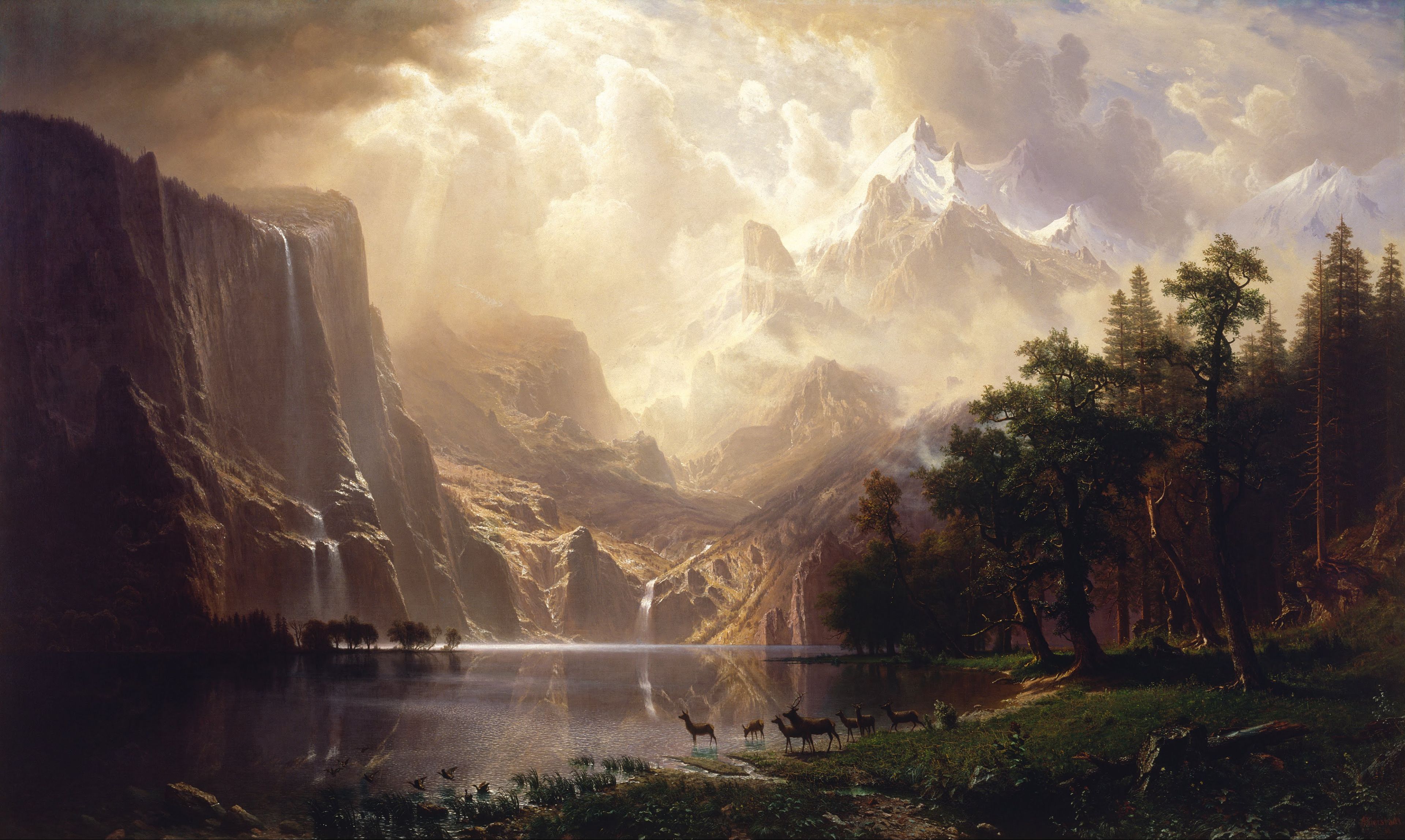 If you sweep your eyes around this frame, they’ll probably start at the top (because it’s the brightest part of the frame, and that attracts attention), follow that dark cloud on the right down and across into the trees, down the trees to the ground and across the bottom of the frame, past the deer and through the center of the painting, along the line of white water to the cliffs, and up the cliffs to that dark diagonal cloud that brings you back to the top of the painting. There’s always something at the edges to keep your eyes moving within the frame.
If you sweep your eyes around this frame, they’ll probably start at the top (because it’s the brightest part of the frame, and that attracts attention), follow that dark cloud on the right down and across into the trees, down the trees to the ground and across the bottom of the frame, past the deer and through the center of the painting, along the line of white water to the cliffs, and up the cliffs to that dark diagonal cloud that brings you back to the top of the painting. There’s always something at the edges to keep your eyes moving within the frame.
I very much enjoy seeing multiple pieces of action happening within the frame, and wide screen is great for that:
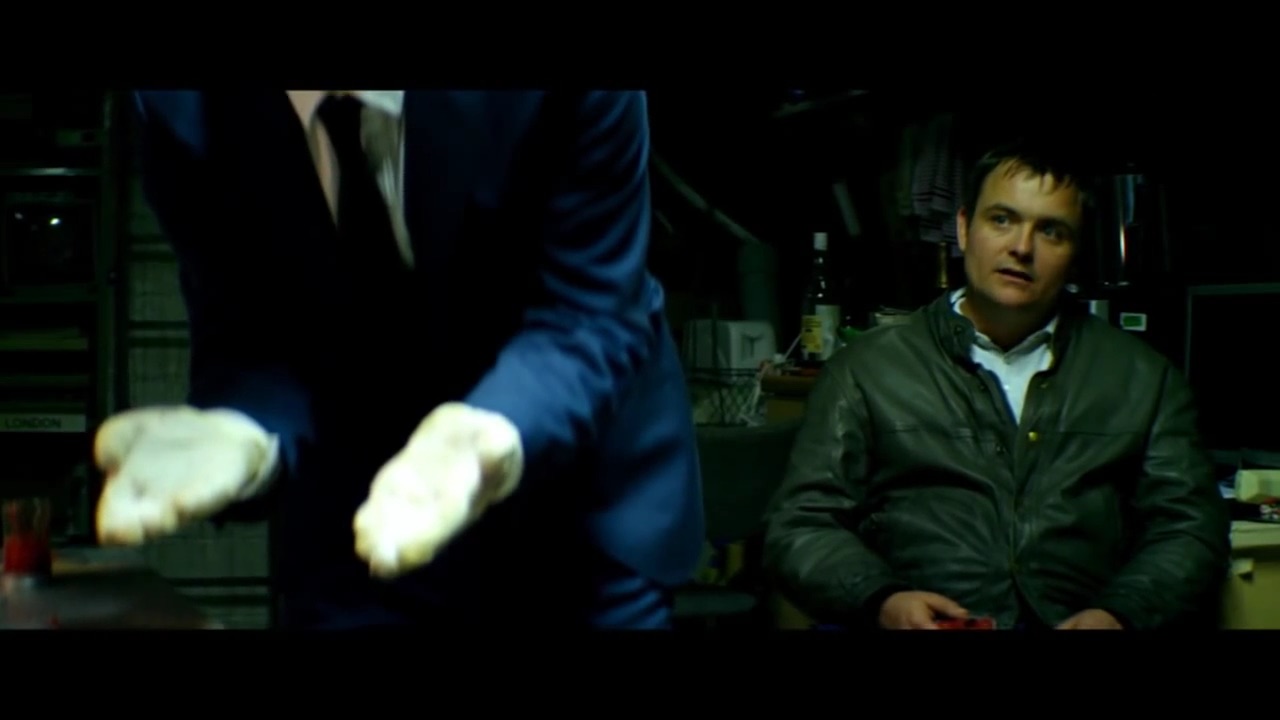 I’d watch this series for its use of framing and space around characters. Also, as compositions take place across both space and time, watch how the different compositions cut together. Some cut seamlessly, but others force your eye to jump around a bit, which is a great way to increase tension in a scene or show the emotional distance between characters.
I’d watch this series for its use of framing and space around characters. Also, as compositions take place across both space and time, watch how the different compositions cut together. Some cut seamlessly, but others force your eye to jump around a bit, which is a great way to increase tension in a scene or show the emotional distance between characters.
This trailer gives you an idea of how powerful composition can be across an edit. Also, keep an eye on elements at the top of frame that justify excess headroom. Not every shot has something obvious performing this task, but most do.
I don’t know where to watch this in the U.S. right now. The series originally aired on UK Channel 4, and the episodes were on Youtube for a while. Here’s hoping one of the big streaming services picks this up. There are two series.

Filmtools
Filmmakers go-to destination for pre-production, production & post production equipment!
Shop Now